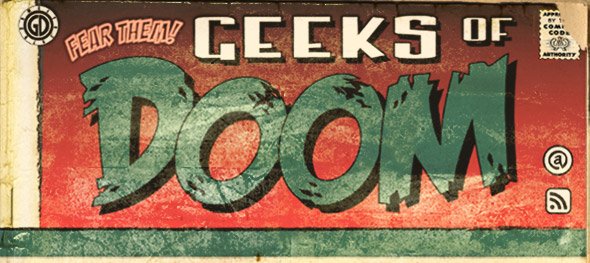
Mad Magazine, the long-running humor magazine, which sliced sacred cows of every facet of life from the left, right and the middle, announced last week that it is ceasing publication after its August issue. For many generations of fans who grew up with and were heavily if not solely influenced by the magazine in their youth, the announcement closes a chapter in the annals of American humor.
From its start in 1952, when the magazine was in a comic book form, wholly different from what later generations knew it as, and right to the end, Mad Magazine remained a cornerstone of satire and blasted holes through everything under the sun, pop culturally, socially, politically, and otherwise. It seemed to reflect a warped mirror at our warped world, sometimes with writing and illustrations that cut further and deeper, especially to younger generations, than any six o’clock news broadcast or newspaper ever could. Mad Magazine, for better or worse, informed most of the public about not only how it was, but how it is, and no one, but no one was spared of its observations.

Mort Drucker ArtIt’s easy for many of today’s generation and newer to the table fans of Mad to think that the magazine was some liberal festival, simply skewering every conservative nook and cranny in its path. While that may be true to an extent, and while it’s safe to say that most if not all of the writers and illustrators of the magazine through its almost seven decades of existence were liberal and left wing for the most part, they also did something sorely lacking in today’s comedic climate, (which are full of individuals who cut their collective comedic embryonic teeth on Mad Magazine): They poked fun at themselves, too. Too much of today’s world in terms of satire, be it the old Daily Show, or John Oliver’s or Bill Maher’s programs, or even the National Lampoon on steroids website The Onion, makes sure to roast to death say a Trump or a right wing ideology, but one would be hard pressed to find them putting the mirror on themselves while they have no emperor’s clothes on. Mad Magazine was, for everyone, making fun of everybody, by everybody and with no filter and no self-conscious bent or agenda; if it made you laugh and even think if you gleaned something from it, mission accomplished by the aptly titled “Usual Gang of Idiots.” The only self-consciousness and self-effacing stance the publication ever took, especially in its heyday, which is arguably the 1960s to 1980s, was always reminding the reader that nothing was to really be taken seriously, coined by the time via a lowercase written and pointedly sarcastic slogan “big deal” as one of the mantras of the entire formula of Mad. The success was in the modest yet high ego that permeated the magazine, and it made many of the writers/illustrators and staff larger than life, and most of them even geniuses at their craft.
And if we went in a sort of chronological order, those names would included titans like innovator Harvey Kurtzman, illustrator wunderkinds like Jack Davis, Bob Clarke, Jack Rickard, Kelly Freas, Paul Coker Jr., Angelo Torres, Don “Duck” Edwing, the incomparable Wallace Wood, the writer/illustrator punches of Paul Peter Porges, the “Lighter Side’s” Dave Berg, the always eye-popping pen strokes of A-list caricaturist Mort Drucker, the countless top shelf standard cartoons of Sergio Aragones and the genius writers Frank Jacobs, Arnie Kogen, Larry Siegel, Stan Hart, John Ficarra, Nick Meglin, and Dick De Bartolo. And then there were people like Don Martin, who arguably was the most unique and hilarious cartoonist/writer the magazine ever had, and the tireless Al Jaffee, whose Snappy Answers to Stupid Questions, Inventions, and famed Fold-Ins were another hallmark staple of Mad that eventually was full of them as the aforementioned writers became veterans of the magazine as the 21st century dawned.

All of those writers/illustrators and others, like Charlie Kadau and Desmond Devlin, who were both reflective as strong talents who made their marks during what is arguably the final classic era of Mad during the 1980s, have not only contributed scores and scores of humorous work for the magazine, but also in a way contributed to how the world sees the world, how the world reflects on the world, poking holes in it at the same time puffing it up.
For most readers who discovered Mad when they were barely in their teens, it still didn’t seem like a lot to digest at the time; in fact, one was voraciously awaiting the next feeding. And it was never spoon fed mind you, but every passionate fan of Mad Magazine was more than willing to submit to it, intoxicated by its revealing of the planet’s inanity. By doing so, it almost empowered the reader; there’s no one who read Mad as a young child who can admit they got all the references of the world, pop cultural and otherwise, that each issue was jam packed with. But what they can admit is that Mad made one feel smarter in a way, at best more to what to avoid in life, what was a put on, a sham, from one’s parents to peers, from authority figures to grocery store clerks and used car salesmen. From favorite entertainment to the opposite sex, Mad Magazine was all a growing teenager needed to get by in the world, the real survival kit, filled with advice, albeit humorous, but still sage advice, that couldn’t be found at one’s analyst, best friend, clergyman, guidance counselor, or parent or guardian. Loving Mad and consciously or subconsciously adhering to life from its dazzling influences was like being in a secret club, for everyone.

And now, since the announcement that the magazine will become no more, relegated to reprints only in its very final only-for-subscribers issues to come (per THR), there has been a surprising amount of press coverage, coverage that the magazine hadn’t seen in perhaps a half a century. All over cyberspace and television and phone screens coast to coast, generations of fans of Mad are clamoring to save the publication and lament about its forthcoming end. Of course, the magazine had been through dire straits long before its move to California last year with a new staff, writing, illustrating, and otherwise, with a revamped fresh approach but yet still trying to walk on the old template. For a 21st century audience of young people (always the magazine’s main demographic) that had a less of a connection to the magazine innately, it was planned obsolescence out of the starting gate. There may have been a few factors that contributed to this swift downhill decline: one, the over saturation of Mad-inspired products, which forced the magazine to compete with itself in recent time; two, the mainly mediocre approach of what is arguably considered comedy today, filled with minions of writers and directors who in essence are presenting hackneyed versions of Mad Magazine‘s best comedic sensibilities; and third and most crucial, the attention span for most people today, manifested by the “get-it-done-yesterday” fast-paced three seconds of content is all we can take world we live in today, makes the stop on a dime and focus on reading and absorbing Mad Magazine almost an impossible task in a 2019 world.
But what can remain is the memory and history of the richness of Mad‘s first four decades or so, where time and time again bullseye marks are hit with effortless ease, humor, and grace. Even when Mad was at its worst during that time, it was at its best and they would be the first to tell you. Instead of taking the time and energy to save a magazine that was really suffering an identity crisis as of late, explore the vast archives of the magazine, via Ebay or local used comic shops, who still have dogeared issues, replete with Fold-Ins already folded ad nauseum readily for sale. They are like history books in a way, an instant check of their pages, say an issue from 1969, whisks one right back into the zeitgeist of that world and times, and even if the reader is confused at the anachronisms included therein, they are not dated one whit, and still have the robust, eye opening hilarity as when they first came off the printing presses.

So while its a monumental goodbye in a lot of ways, the proliferation of so much back content, coupled with the obvious reverberation Mad Magazine still circulates around the comedy world, will keep alive the magazine, the mavericks who helped create it, and the one tooth missing iconic visage of long time mascot Alfred E. Neuman. And to paraphrase and twist on Newman’s famous catchphrase, the fact that we all live in Mad Magazine‘s large and looming footprint forever and ever anyhow, whether we like it or not, or even know it or not, makes sure that even though it will soon be gone, there will be no reason to ever say, “What, Me Worry?”










No Comments »
No comments yet.
RSS feed for comments on this post. TrackBack URL
Leave a comment